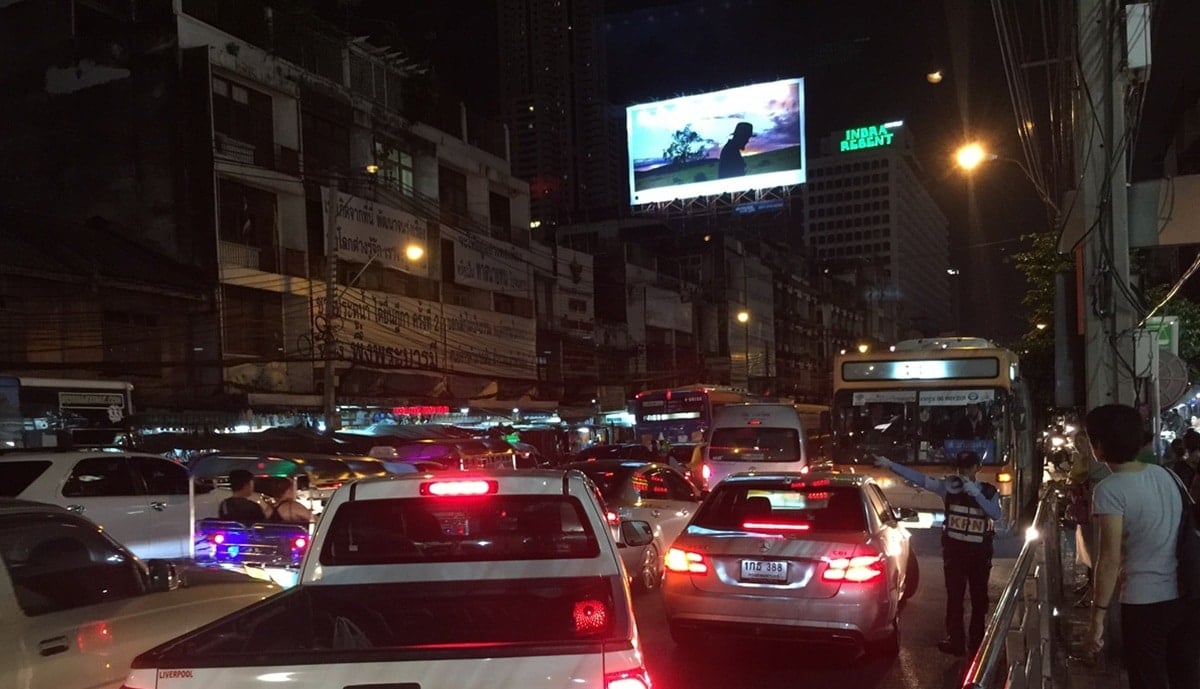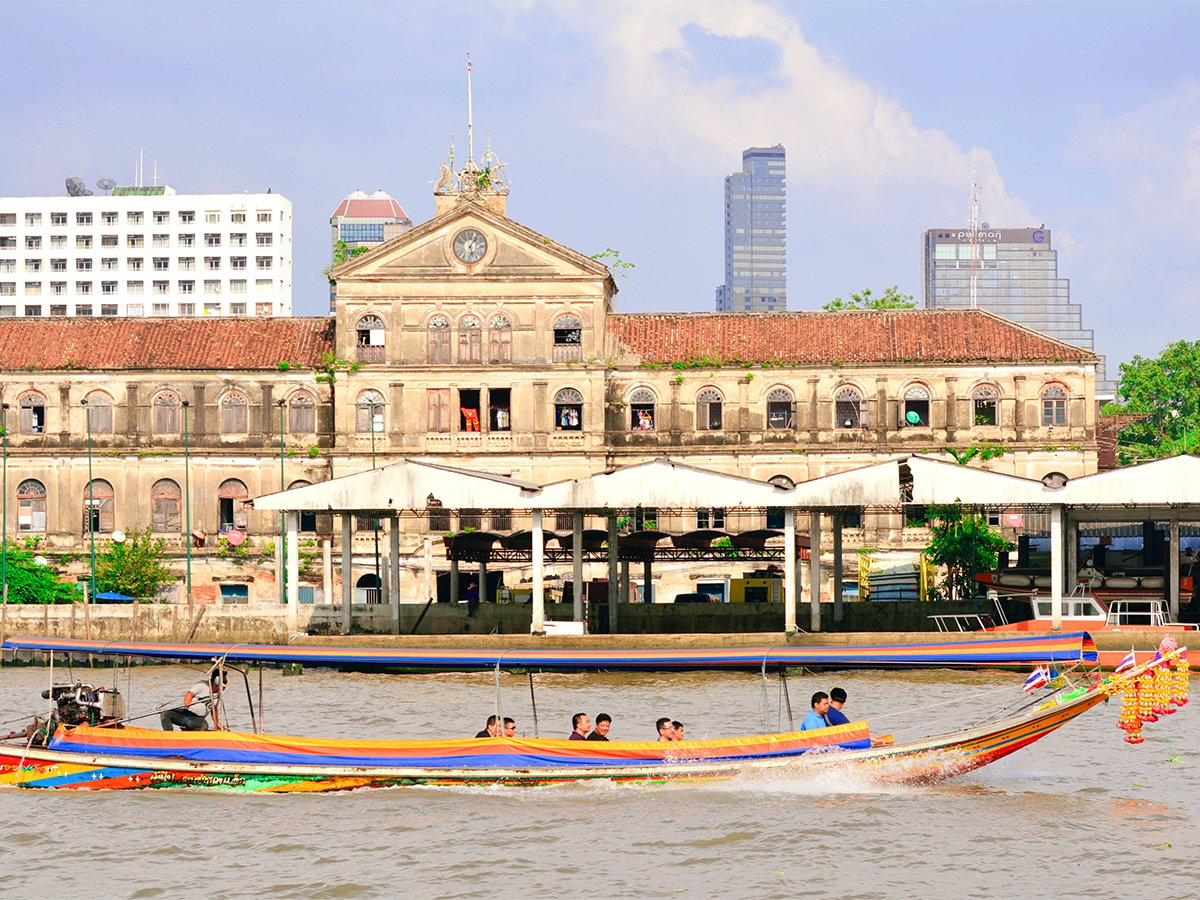
A refreshing drizzle descended from the heavens on the evening I arrived in Ubon Ratchathani, Thailand, for its annual candle festival. Held at the beginning of Khao Phansa (Buddhist Lent), this two-day celebration in late July marks the start of the rainy season with the largest candle procession in Thailand. Puddles of fallen rain in Thung Si Muang Park, reflected the imposing, golden statue of Garuda (half-man and half-bird vehicle of the Hindu god Vishnu), stretching his wings on a vessel carrying a giant carved candle. Lively mor lam Thai folk music filled the air and street vendors fired up their grills as people spilled into the meadow and neighboring streets to admire the giant waxwork castles. These ornately carved monuments, depicting Hindu/Buddhist tales with mythical creatures made of beeswax, hailed from various temples, districts, even from His Majesty the King of Thailand. The procession was preceded by dancing, as people gathered to celebrate the spiritual renewal the season brings.
It was, all in all, an amazing experience. Here are ten things I took away from this year’s Ubon Ratchathani Candle Festival, a must-see on your next visit to Thailand:
1. Its illuminating beginnings
The power of the candle is universal. Thai people have long depended on it to light up their homes, and even with the advent of power, it has remained a powerful symbol. Centuries ago, the arrival of monsoon season meant people were stuck indoors, out of fear of the animals and snakes that the rain brought out into the fields. Lord Buddha urged people to stay inside during this period. And so began the tradition of offering candles to monks, who would retreat to their temples with the rain to meditate and study. As time passed, instead of bringing normal candles, devotees began to carve wax into nuanced figures as offerings. The inaugural candle festival was in 1940, on the eve of the full moon of the eighth lunar month. Communities started a friendly competition to produce the most impressive sculptures, which today are paraded through the streets as the festival’s main event. The evening before the parade, the festival also celebrates Asahna Bucha, the day Lord Buddha delivered his first sermon in India.

2. Preparation takes months
On my visit, as the sun slowly set on Asahna Bucha, the night before the parade, a group of volunteers put the finishing touches on the 60-foot wax castle at Wat Sripradoo, stapling to it the letters of the wat (temple) and adorning it with floral decorations. An intricately carved, three-headed elephant stood at the front of this majestic creation, followed by sculptures of Buddha surrounded by devas/devis (angels) crafted on supported wood, coated with wax and decorated with Thai elements. It took nearly three months of painstaking work by local artisans and monks to bring this vision to life. Residents in the village gathered to help, pulling the structure out from under the arched entryway, as some used poles to prevent it from touching electric wires. Other temples in the region followed suit, hauling their exhibits to the city center for the celebration.
3. Two types of carvings, unlimited possibilities
No two displays were alike, which is the beauty of the festival. The creativity that flows through these monuments is for me unparalleled; even the wax figures at Madame Tussaud’s can’t compete. There are two types of carvings: sticker imprint and crafted candles. In the former, artists carve smaller figures and connect them together for a final form. The latter involves carving from a giant piece of wax. The candles, saffron in color, the hue of fire, pay homage to the robes worn by monks. The festival also parades decorative floats made with fresh and dry banana and palm leaves, interlaced with flowers and rice seeds. Regardless of their composition, it’s hard not to admire the work that goes into each and every detailed piece.
4. The opening ceremony is amazing
The evening before the parade, the wax castles were gathered at Thung Si Muang Park, so people could take a closer look. Judges cast their votes for the best contribution. Giant wax candles, reaching 15-feet high and spanning 60 feet, sat on truck beds lining the sides of the roads leading to the park. Having grown up captivated by Hindu mythical stories, I was enthralled as they were given life in such elaborate detail. Walking alongside giant naga (serpent gods), horses and elephants, with their slick skin glimmering under the streetlights, was truly a once-in-a-lifetime experience.

5. The candle procession is, too
On the first day of Khao Phansa, the parade started around 10am in front of Wat Si Ubon Rattanaram and headed along the road to Thung Sri Muang Park. At the main stage, seated across from a large photo of His Majesty the King (Vajiralongkorn Bodindradebayavarangkun), commentators announced the participants, starting from the first one presented by the King. Dancers and musicians in traditional costume accompanied each wax structure. Along the path, visitors with colorful umbrellas sat on the bleachers. A special VIP area next to the announcers provided seating and refreshments for $30. No matter where you were, it was hard to miss the impressive floats and their significance.
6. Mythical stories come alive
There were dozens of candles that took my breath away, but one that stuck with this nature-lover told the story of Himmapan, a legendary forest surrounding the base of Mount Meru. In Buddhist mythology, the forest was home to the Nariphon tree, which bore fruit in the shape of young female creatures. Other spectacles depicted stories of Lord Buddha: leaving his city with his wife and children for the jungle; of his birth, enlightenment and nirvana; and of his preachings, surrounded by lotus flowers and mythical creatures.

7. There are traditional performances
Thailand, which has never been colonized, has held onto its rich cultural and religious traditions. As the daring Tham Luang cave rescue proved, the Thai people are resilient in large part because of their emphasis on community and belief in Buddhism, which permeates every aspect of their lives. During Khao Phansa, young boys are encouraged to ordain as monks, even if only for a few days. In Ubon Ratchathani, people belong to the Isan region, sharing a culture and dialect closer to neighboring Laos, and they are proud to participate in the celebration of Buddhism. Each candle was preceded by performances by elders or students who practiced for months. Dressed in colorful clothing, they danced to folk songs and the rhythms of drums and khene, a mouth organ of Lao origin made of bamboo, in praise of the King and their agrarian culture.
8. The’s (friendly) competition
Participants are honored to be a part of the festival, but that’s not their only motivation. The small, medium and large displays are judged in two categories. This year, the sticker imprint of the candle castle I witnessed at Wat Sripradoo took the imprint prize, while the creation from Wat Thung Sri Muang won the crafted category. The winning exhibit stays at the temple for the rest of the year, while the others are melted to create the following year’s exhibits, keeping with the Buddhist belief that nothing in life is permanent. The winner parades again the following year, still magnificent, albeit a bit frayed at the edges.

9. Thai hospitality abounds
Thai people are friendly and welcoming, as was quite evident at the candle festival. As droves of people poured in on the day of the parade, volunteers from local businesses set up stands to provide complimentary bottled water. Shiny plastic sheets were handed out to people sitting on the wet roads along the route. For those in the VIP area, businesses delivered pizza and gift bags, stocked with treats and hand fans. There was even one float from a local restaurant distributing warm pad Thai made right on the truck to onlookers.
10. The food and shopping is good
No one goes hungry at the candle festival. If food was not doled out by parading floats, it was served at dozens of stalls in the street fair set up near the temple. Fried banana, a popular South Asian street snack, was everywhere. So were sausages and seafood made fresh on the grill. As the day celebrates Khao Phansa, no alcohol was permitted, but there was plenty of fresh juice and iced tea. As for shopping, all I needed was a couple hundred baht (less than $5) for beautiful Thai clothing. Given that Ubon isn’t touristy, I didn’t even need to bargain. Of course, finding room in my luggage for all my souvenirs proved challenging, but I was happy to bring home memories of this wonderful festival.

Where to stay
Located centrally in Ubon Ratchathani is the Sunee Grand Hotel, which offers large rooms with modern amenities, a pool and an adjacent mall. At the onsite restaurant, enjoy buffet meals for breakfast, lunch and dinner.
Getting there
Ubon Ratchathani is located 370 miles from Bangkok. Nok Air and Thai Smile have direct hour-long flights from Don Muang Airport in Bangkok (one of its two international airports). Since the festival is so popular, flights are booked months in advance, so get your tickets and book accommodations early.



